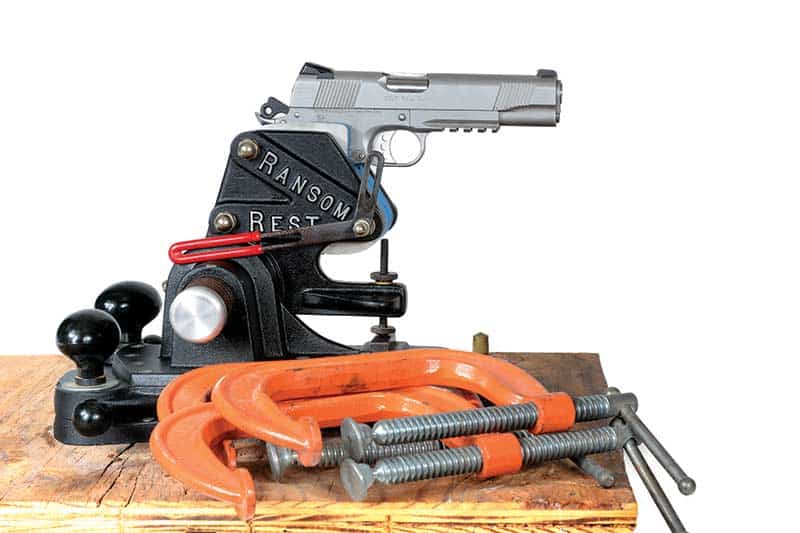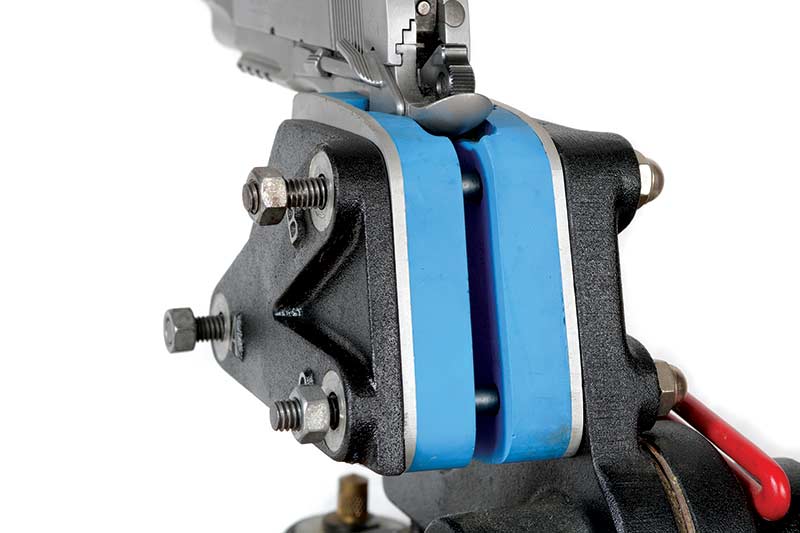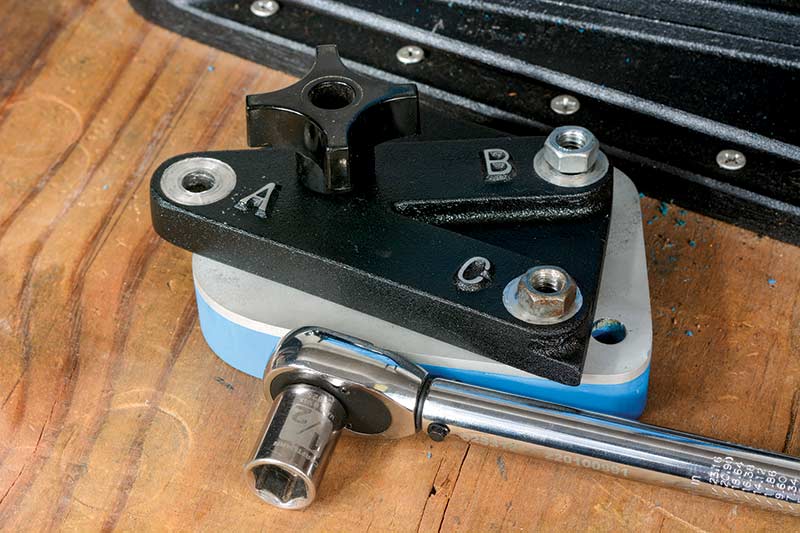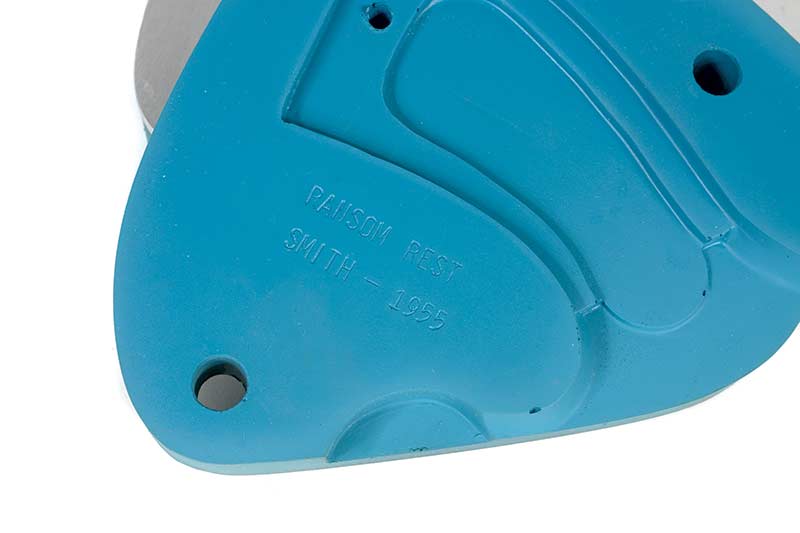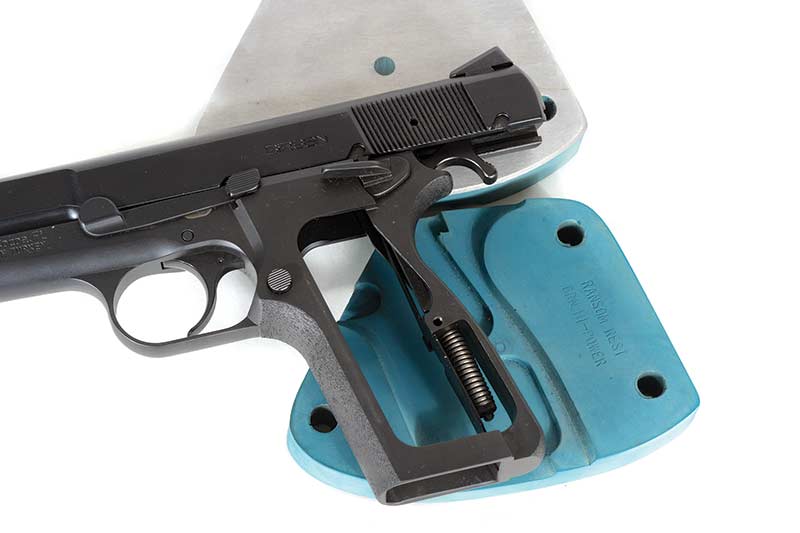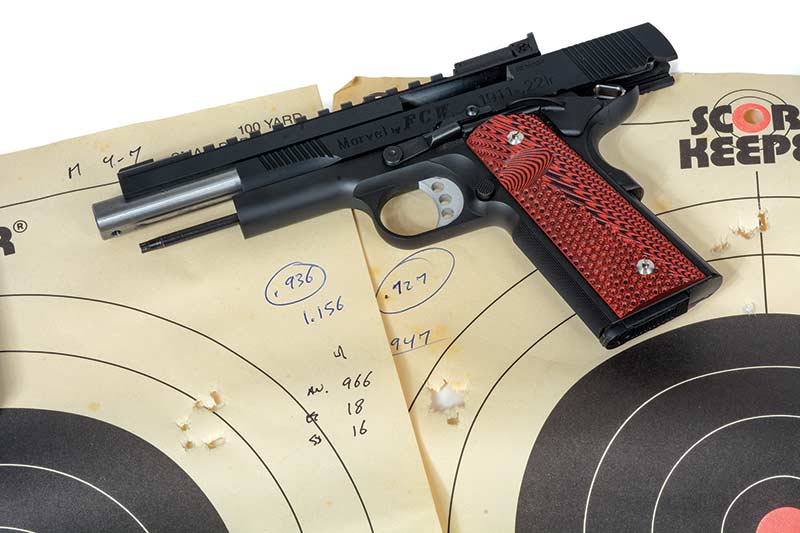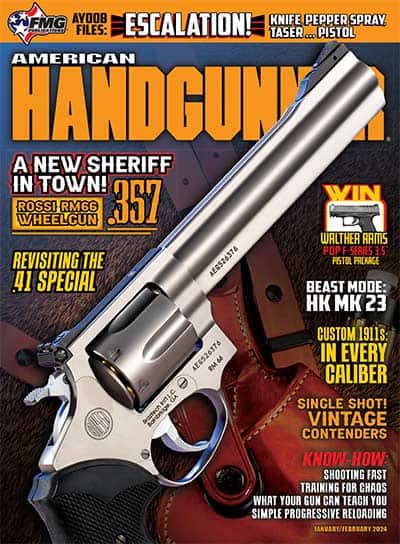Ain't Seen a Ransom Rest in a Gunfight...
Things That Are Different And Other Pet Peeves
For decades, I’ve seen that dismissive one-liner (including some variants, such as “shot timer in a fight”) repeated, often by men I deeply respect. And it truly is a good one-liner; what it isn’t is the whole story. It is true you’re not likely to use a Ransom Rest in a defensive shooting. Nor are you likely to have a shot timer. Or hearing protection. Or turning targets. Or blue guns. Or dummy cartridges … all of which a seasoned defensive shooter will use at some point. It is wise to keep their use in perspective — the true role of that catchphrase — but they do have a role to play.
Self-defense training should be realistic, but as one can’t go about actually swapping shots with people, concessions need to be made that allow for safe, responsible training that develops good habits. Of necessity, that means there are some skills and tools necessary to make the most of training opportunities rather than for actual use on the street, and there’s nothing wrong with this when used within reason.
For example, there’s an art and science to how you stage the magazines on your gun belt during a shooting class so you get the most time on the firing line without constantly having to go back to reload magazines. In real life, if you have to reload (a big “if”), I wouldn’t advise swapping magazines around in their carriers while you’re doing it. It’s useful for what it’s for, but don’t mistake what that is. We need to clearly identify the purpose of things and keep them in their proper places. Some practices are so dangerous they have no place, such as the immediate policing of fired brass during a reload, which has worked out poorly in several police shootings.
With this backdrop, it’s time to talk about what exactly is the role of the Ransom Rest in defensive shooting, and the answer is surprisingly simple. It’s an objective standard for the capability of your gun, your gun and ammunition combination, and your shooting ability.
Accuracy Can Matter
It is true most modern handguns are more than capable of acceptable accuracy for defensive use, but some are a lot more accurate than others (this is part of the continuing allure of the 1911). So long as reliability is not affected, this is greatly to be desired, and not just for bragging rights. We’ve seen high profile defensive shootings in the last couple years that required precise shots well beyond the traditional seven-yard envelope, in which case the more accurate the gun, the greater the odds of making the shot without endangering others.
Almost all modern handguns are more accurate than most shooters, so to truly gauge their capability, most of us need a test fixture. Some don’t: Massad Ayoob has a long-standing technique that gets the job done admirably. I’ve never shot against Mas, but that’s the same as saying I’ve never lost to him: He’s renowned as an exceptional shot. I have occasional bursts of fantastic group shooting, but I can’t do it every single group, much less all day long. The Ransom Rest can.
Ransom Operation
The Rest is a bit more sophisticated than it seems and is intended to eliminate any human error while still replicating the way the gun moves in a human hand, since the resistance to recoil affects how a gun shoots.
The frame of the pistol or revolver, with grips removed, is clamped in a set of aluminum-backed inserts with a molded gripping surface made of a proprietary rubber intended to duplicate the resistance offered by the human hand, and which is specifically shaped for that model of handgun. Inserts are available for hundreds of pistol models, from traditional single actions to modern polymer striker-fired pistols.
The trigger is depressed by a lever arrangement that pushes straight backwards (there’s an optional cable pull), and the assembly recoils together under spring tension, not unlike when a gun is fired handheld. The whole shebang must be firmly clamped in place on an adequate mount or table, and the gun is rotated back down from recoil between shots to reset it. It never gets tired; it never flinches.
Ransom Accuracy
So, when it tells you your gun shoots 4″ on average at 25 yards, that’s pretty much what it does, and if you’re choosing between carrying that or one that shoots 1½”, that’s useful to know. It’s also a helpful baseline if you like swapping parts on your guns, as we all do. When I was a child, visiting smoky gunshops staffed by wizened, visored men who held the secrets of the ages, changing a barrel was alchemy, and I wasn’t entirely sure my religion would allow everything involved — certainly not all the cursing. In our current age of Gucci-everything, it’s now no big deal to swap one out. But does it help? Many do. But the Rest has also shown me before that one very expensive accuracy upgrade … really wasn’t.
What About You?
Those are dramatic examples, and many shooters would notice even shooting by hand, but not all. Which brings us to the final question: if you don’t know how well your gun shoots, how can you tell how well you’re shooting it? There is wisdom in focusing less on the mechanics of the gun than on the shooter’s competence, which is generally what needs the most work — as they say with race cars, it’s the loose nut behind the wheel. But you still need to know what the gun’s doing. Nearly 20 years ago, when I was doing quite a bit of Ransom Rest testing, I was able to identify that I was about a 2″ shooter at 25 yards. Whatever the gun could do, add 2″, and that’s what I’d group at 25 yards. Time and practice have changed that. Guess how you learn something like that?
I’ve been working with an uber-accurate Marvel .22 pistol for quite some time now and sent the maker a photo of a sub-1″ group I’d shot from the bench at 25 yards. He responded that the gun could do better, and he was right. After spending a lot of time shooting one from the Ransom Rest, I’ve seen groups half the size at twice the distance. If I hadn’t known that, I might have been content with an inch, but far from shooting to the limits of the gun, I still have quite a bit of work to do.
Like any professional piece of equipment, the Ransom Master Series Rest isn’t cheap; it’s around $600. Mastery in any field consists largely of the ability to make progressively finer distinctions, and when it’s time to sift out the variables — gun, ammo, shooter — it has its place. It never lies because it doesn’t care about the outcome; it just tells you the truth about the work you have to do.
Special thanks to Gunsite Rangemaster Lew Gosnell.
For more info: RansomRest.com, MarvelPrecision.com

